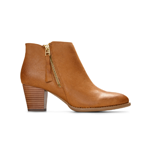
Dr. Jim Nicolai on Breathwalking

Jim Nicolai, M.D., is the former Medical Director of the Integrative Wellness Program at Miraval Resort and Spa. He is a board-certified family practitioner and a graduate of the Integrative Medicine Fellowship at the University of Arizona in Tucson. A graduate of the Indiana School of Medicine, Dr. Nicolai completed his family practice residency at St. Francis Hospital & Health Centers.
Dr. Nicolai has a special interest in whole-person medicine, addressing patients as mental and emotional beings, energetic and spiritual entities, and community members, as well as physical bodies. His expertise is in combining conventional medicine with the intelligent use of complementary and alternative therapies, including herbs and other botanicals, vitamins and supplements, nutritional counseling, lifestyle management and stress reduction, including breathwalking.
What is breathwalking?
Breathwalking is a way to actively meditate in real world time. You don't have to close off your world-- in fact, you don't even have to close your eyes to the benefits of what meditation can offer. All you have to do is sync the breath with your stride and you're on your way.
What makes the practice of breathwalking different from meditation?
Most meditation practices involve passively observing your breath and thoughts; with breathwalking we're actually doing something to our breath. Subtly changing our breathing gives us something to do-- and for all of us "doers" who are challenged by "non-doing," this makes all the difference in the world.
How can someone integrate breathwalking into their daily routine?
You have to breathe and you have to walk. You can get into a meditative state anywhere you do both-- which is anytime and any place!
How to try it on your own:
The fundamental rhythm of breathing is four-in and four-out. So, take four short, segmented breaths in, one after another, followed by four, short segmented breaths out in time with your steps as follows: In-in-in-in, out-out-out-out. The breaths in should typically be through the nose and the breaths out through the mouth.









